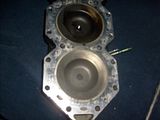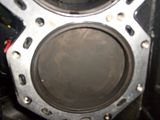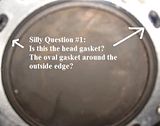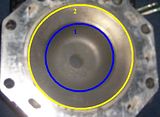Hello Everyone,
I hate to ask a symtom based question, but I need to know where to start my investigation.
History:
This engine has been running great for many months now
What happend.
Yesterday while out fishing I was coming back across the lake at WOT and after a sort of "pop" the engine stalled. The boat came to a rest and I got that sinking 'this is going to cost alot to fix' feeling and decided to see if she would start back up.
She did, and would idle ok, but something is just off now, it doesnt sound exactly right. I put her up on plane and then gave her a little more juice and it sounded almost above the engine noise like a metal on metal tapping.
Assuming this was not good, I killed it and trolled her in.
My question(s):
Based on this symtom does it sound like I blew a gasket or busted a piston or something else?
Is a compression test my best first step in trying to debug what exactly is wrong?
Thanks for any advice and suggestions to get me started on where to drill in the fourms? I realize this is very vague, and if there is any other information I can provide I would be happy to. Just trying to get started debugging on the right foot.
Roy
I hate to ask a symtom based question, but I need to know where to start my investigation.
History:
This engine has been running great for many months now
What happend.
Yesterday while out fishing I was coming back across the lake at WOT and after a sort of "pop" the engine stalled. The boat came to a rest and I got that sinking 'this is going to cost alot to fix' feeling and decided to see if she would start back up.
She did, and would idle ok, but something is just off now, it doesnt sound exactly right. I put her up on plane and then gave her a little more juice and it sounded almost above the engine noise like a metal on metal tapping.
Assuming this was not good, I killed it and trolled her in.
My question(s):
Based on this symtom does it sound like I blew a gasket or busted a piston or something else?
Is a compression test my best first step in trying to debug what exactly is wrong?
Thanks for any advice and suggestions to get me started on where to drill in the fourms? I realize this is very vague, and if there is any other information I can provide I would be happy to. Just trying to get started debugging on the right foot.
Roy
























